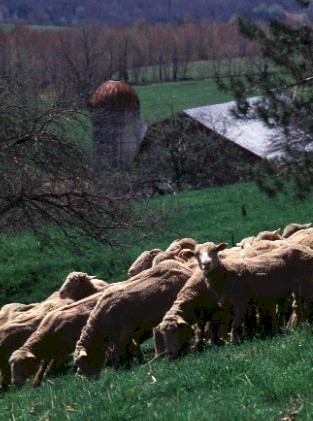|
Yarns
Reviews
 More articles
More articles
Shops
Links

Related info
New this week
Subscribe!
Tell a friend
Home


|
|
|

Merino 101
Merino is both the Cadillac and Model T of the wool world. That's because it's the finest, most valuable wool on the market, and it comes from from the oldest, most established sheep breed in the world. All other fine-wool breeds (including Cormo, Corriedale, and Rambouillet) are the result of cross-breeding with Merinos.

Photo from Morehouse Farm Merinos. You can learn more about Morehouse Farm's amazing success story in Candace Eisner Strick's Sweaters from New England Sheep Farms or Melanie D. Falick's Knitting in America.
In the Beginning
Merino sheep originated in North Africa before being introduced in Spain by the Moors. Here they were so prized that their exportation was punishable with the death penalty.
Not until the 18th century were Merino introduced elsewhere in Europe and New Zealand. Today, New Zealand remains the Merino capital of the world, with Australia, South Africa, and the United States following close behind.
Merino produce the finest fiber of any sheep. It's soft yet strong and resilient, and it doesn't itch.
Who Makes It
Merino yarn has been commercially available for many years. But I credit its recent rise in popularity among knitters to Australian designer Jo Sharp.
She has five published collections and an exquisite line of yarn to her credit. Her 8-ply DK-weight wool is made from extra long, soft Merino/Border Leicester fleece.
You'll also find Merino from Baruffa, Ornaghi Filati, Tahki, Lang, and Berroco, as well as smaller, custom operations such as Mostrly Merino (802-254-7436) and Morehouse Farm Merinos.
Working With Merino
From a knitter's perspective, Merino is a pleasant fiber to work with. In its DK-weight form, it feels significantly lighter and smoother than other types of wool. The fiber's loose crimp gives it elasticity and loft without losing its luster.
Go to yarn reviews section
|